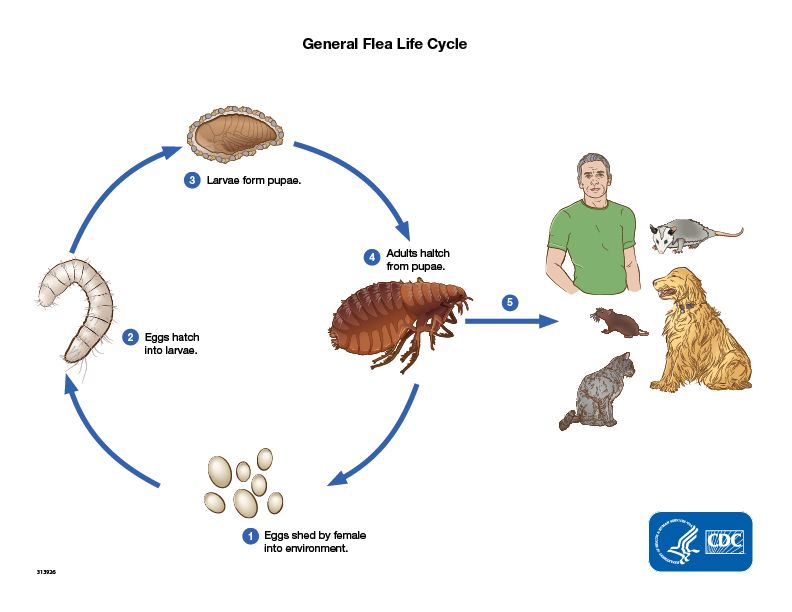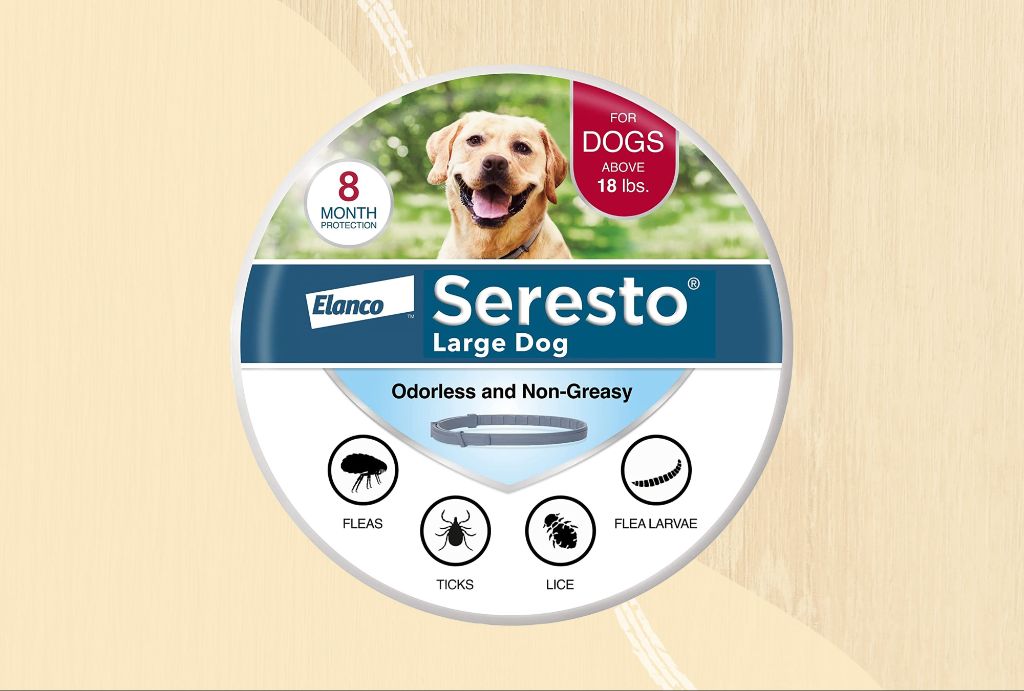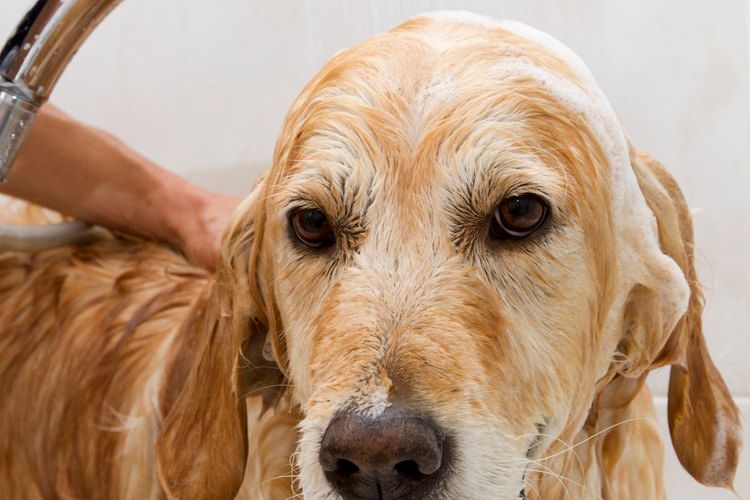Introduction
Flea treatments are an important way to protect dogs from flea infestations and the health issues they can cause. Topical and oral flea treatments work by spreading insecticide across the dog’s skin and into their bloodstream to kill fleas and prevent reinfestation. However, some dog owners wonder if bathing their dog after applying flea treatment reduces its effectiveness. The answer depends on the type of flea product and when the bath takes place.
Most veterinarians recommend waiting at least 48 hours after applying flea treatment before bathing a dog. This allows time for the active ingredients to fully absorb into the skin and coat. Bathing too soon can reduce the product’s insecticidal efficacy. However, some modern waterproof spot-on treatments are designed to withstand bathing even right after application. It’s important to read the label instructions for each specific flea product.
This article explores how bathing may impact different flea treatments. Understanding proper bathing precautions can help maintain flea protection while keeping dogs fresh and clean.
How Flea Treatments Work
Flea treatments work by using chemicals that are toxic to fleas and flea larvae. The most common active ingredients in flea treatments are:
- Fipronil – This insecticide kills adult fleas and ticks. It disrupts the insect’s central nervous system, causing paralysis and death. Fipronil is found in treatments like Frontline (Source).
- Imidacloprid – This insecticide attacks the flea’s nervous system. Brands like Advantage contain imidacloprid (Source).
- Selamectin – This insecticide and anthelmintic kills fleas, prevents flea eggs from hatching, and kills some ticks. It’s the active ingredient in Revolution (Source).
These chemicals spread over the pet’s skin and coat, disrupting the flea life cycle at multiple stages. Some last for weeks, while others require monthly reapplication.
Flea Life Cycle
The life cycle of a flea consists of four stages: egg, larva, pupa, and adult. According to the CDC, adult fleas live on the pet where they feed on blood. The adult female fleas lay eggs that fall off the pet and into the environment such as the pet’s bedding or carpets. The eggs hatch into larvae which feed on organic debris. The larvae then spin a cocoon and enter the pupal stage where they undergo metamorphosis before emerging as adults ready to jump onto a host to continue the cycle.
The adult fleas living on the pet are the ones that bite and cause irritation. They can jump onto humans as well. By targeting the adult fleas on the pet with treatments, the goal is to break the flea life cycle and prevent further egg laying and development of immature fleas. However, pupae may remain dormant for some time before new adults emerge, so treatment often needs to be continued for a while to completely clear an infestation.

Bathing and Flea Treatments
Bathing your dog can wash off some topical flea treatments like Frontline, according to this source: How to Bathe a Dog After Flea Treatment. Topical flea treatments work by spreading the insecticide over the dog’s skin. When the fleas bite, they ingest the treatment and die. Bathing the dog too soon after application can wash away some of the insecticide before it has fully absorbed into the skin and hair follicles where the fleas feed.
However, the timing depends on the exact product. For example, Frontline recommends waiting at least 2 days before bathing according to this source: How Soon to Bathe a Dog After Flea Treatment. Other products like NexGard chewables work systemically, so bathing has no effect.
In general, it’s best to avoid bathing for a few days after applying a topical flea treatment. Or use a waterless shampoo or dry bathing method. If bathing cannot be avoided, limit the amount of water and soap exposure.
Short-Acting vs Long-Acting
There is an important difference between short-acting and long-acting flea treatments when it comes to length of effectiveness. As the name implies, short-acting treatments like nitenpyram provide faster relief, usually killing adult fleas within 30 minutes. However, they only protect for a short period, often less than 24 hours.
In contrast, long-acting oral or topical treatments like isoxazoline can provide month-long protection by disrupting the flea life cycle. This prevents reinfestation and controls flea populations over time. Long-acting treatments are better for ongoing flea prevention, while short-acting options work for quick relief.
Waterproof Options
Some flea and tick treatments for dogs are formulated to be water-resistant or waterproof. This means they are designed to remain effective even after the dog gets wet from activities like swimming or bathing. Popular waterproof options include:

- PetArmor Plus – contains Fipronil and is waterproof for 30 days per the manufacturer. One review says “it held up great even after my dog went swimming” (Source)
- Advecta 3 – contains Delmethrin and Pyriproxyfen, waterproof for 28 days (Source)
- Frontline Gold – contains Fipronil and Pyriproxyfen, waterproof for 30 days (Source)
Waterproof or water-resistant treatments are ideal for dogs that swim regularly. They ensure full protection against fleas and ticks without bathing or water interfering.
Timing of Bathing
Bathing a dog too soon after applying flea treatment can reduce its effectiveness. Most vets recommend waiting at least 2 days before bathing your dog after applying a topical flea treatment. This allows enough time for the active ingredients to fully absorb into your dog’s skin and coat (Source).
For some treatments like Frontline Plus, the manufacturer recommends waiting 48 hours before bathing. Always check the product label or insert for specific instructions on bathing after application (Source). Allowing the recommended absorption time ensures the treatment will remain effective for the specified length of protection, usually around 1 month.
Bathing too soon can wash away the active ingredients before they have fully absorbed and bonded with the oils in your dog’s skin. This will dramatically lower the effectiveness against fleas, ticks, and their eggs.
Best practice is to mark your calendar and avoid bathing for at least 48 hours after applying any topical flea and tick treatment.
Alternative Options
Unlike topical flea treatments that can wash off, oral and collar flea treatments provide ongoing protection that isn’t affected by bathing. Oral treatments like Nexgard or Comfortis are given as a tablet or chewable that gets absorbed into your dog’s bloodstream. These treatments kill adult fleas and prevent reinfestation. Some oral treatments also prevent ticks. Oral flea and tick prevention can last from one month to three months depending on the product.
Flea collars like the Seresto collar provide 8 months of flea and tick protection by constantly releasing small amounts of insecticide that spread across your dog’s coat. Since oral and collar treatments don’t rely on topical application, bathing your dog has no effect on their performance. These may be good alternatives if you need to bathe your dog frequently.

Maintaining Effectiveness
If bathing your dog cannot be avoided after applying flea treatment, there are some steps you can take to help maintain the treatment’s effectiveness:
Use a soap-free shampoo like an oatmeal shampoo that won’t strip the oils from your dog’s coat as much. Rinse thoroughly so no residue is left behind. According to Wagwalking, salt water baths may also impede fleas without removing as much of the treatment.
Only bathe the minimum number of times necessary. The more you expose the treatment to water, the more it will reduce effectiveness. Space out baths as far as possible.
Speak to your vet about waterproof or extended-release options that are less impacted by water exposure. For example, some treatments like Vectra 3D are waterproof immediately after application according to The Spruce Pets.
Consider bathing your dog before applying the monthly treatment instead of after. This guarantees full potency. Just be sure to thoroughly dry your dog before application.
Monitor your dog closely after bathing and reapply earlier if needed. Most treatments last 30 days but bathing may shorten this period. Watch for scratching as an indicator it is wearing off.
By minimizing baths, using gentle shampoos, and exploring waterproof options, you can maintain your flea treatment’s effectiveness even when the occasional bath is necessary.
Conclusion
In summary, bathing your dog too soon after applying flea treatment can reduce its effectiveness. This is especially true for short-acting, topical treatments that are easily washed off. Long-acting oral/injectable treatments and waterproof topicals are less impacted by bathing.
To maintain flea treatment effectiveness, avoid bathing your dog for at least 2 days after application. Check the product label for specific recommendations. Consider using a long-acting or waterproof treatment if more frequent bathing is needed. Monitor your dog closely and reapply flea treatment as soon as you see signs of reinfestation.

With proper application timing and bathing practices, you can successfully control fleas while keeping your dog clean and fresh. Work closely with your veterinarian to develop an integrated pest management plan tailored to your dog’s needs. Consistent flea prevention is key to protecting your dog’s health and comfort.